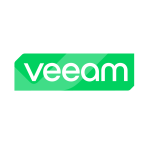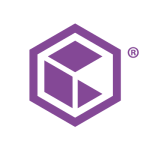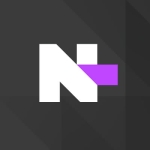What is our primary use case?
The primary use case is to use NetApp Cloud Volumes ONTAP for unstructured data storage, both for Windows and Linux-based machines. We use both from an NAS functionality perspective, along with SMB and NFS file shares/exports, for storing unstructured data.
How has it helped my organization?
The solution enabled us to deliver on our cloud-first strategy. It also provided us some savings and consolidation capabilities from a volume perspective where we can run with less management. We can run higher volumes of unstructured data and store higher volumes of unstructured data as compared to other solutions.
What is most valuable?
- The data tiering capability
- Deduplication
- Compression
The data efficiencies are valuable, If we want to combine compression and deduplication.
It is valuable to us that it runs natively in Azure.
Using this solution, we are also in control of our backups. In regards to disaster recovery, we don't have to rely on Azure or Microsoft to fail anything over. We are in control of backups and replication (or disaster recovery).
With NetApp, you can integrate malware scanning or malware protection. This is something valuable that is not offered in SaaS solutions typically.
The solution provides us unified storage as long as it's unstructured data that can be accessed through a file share. We are in control of the portability of the data. We are not locked into Azure with this product. For example, if we wanted to go to AWS, there is that capability. If we wanted to pull this data or solution back to on-premises, there's that capability. Therefore, there is some flexibility in the control of the data versus being locked into a non-proprietary solution, e.g., just within Azure.
What needs improvement?
If they could include clustering together multiple physical Cloud Volumes ONTAP devices as an option, that could be helpful.
The ease of data migration between devices could be improved somewhat. There is already some flexibility which is better than just migrating the data. However, that could potentially be further improved.
For how long have I used the solution?
Including the evaluation period, it has been over two years.
What do I think about the stability of the solution?
The stability of this solution has been great. A couple of interruptions that we had were not really related to the product. They were more related to Azure, where we had a couple of issues with actual Azure hosts which run the virtual storage device and Cloud Volumes ONTAP.
What do I think about the scalability of the solution?
There is a team of four people who are in the role of managing and administrating the devices. There are thousands of people who access it.
There is room for growth. We are just in the process of migrating an on-premise system. That will probably service 10,000 users. We started out using it mainly for unstructured data which would be less frequently used or Azure-native. Now, we are at the process of expansion. After using the product for a year and a half, we are comfortable migrating on-premises into our system.
How are customer service and support?
NetApp technical support is good. They are receptive and want to make sure that you succeed in using their product. Overall, their Professional Services, setup, and support for the past couple of years, in comparison to other large companies that I have used in the past (like Microsoft, IBM, or Dell EMC support), has been as good or better than their peers.
Which solution did I use previously and why did I switch?
We have used the NetApp solution on-premise with one of our outsourcing providers. We have used NetApp before in Canada. In the US, we used the Dell EMC NAS solution. So, we have had some experience with NetApp as our company has used NetApp in the past for years, but those solutions were not entirely cloud-based. Cloud Volumes ONTAP is unique in that it runs the same familiar operating system that you would run on the on-premise NetApp system with some differences and specifics to Azure. There are a lot of synergies, but basically it's the same operating system. A lot of the things work the same as they would using the on-premise NAS. Currently, we use the solution in Asia and North America.
How was the initial setup?
The initial setup is well-documented, so it's fairly straightforward. There are all these aspects where you need to have some understanding of what you want to achieve in the end. You also need to have in mind a final design of what the requirements are. Based on that, the initial setup is well-documented and not overly difficult.
Our initial deployment was a year and a half ago when things were fairly new for NetApp. Our environment was fairly complex because we needed an antivirus integration along with different things, so the initial setup took about two to three weeks. Then, setup of subsequent Cloud Volumes ONTAP devices, as we expanded the solution, would take one to three days. We followed the same steps that we established in the original deployment, and in some cases with a few improvements, incorporating lessons learned.
What about the implementation team?
We knew what capacity we required. We knew that we wanted to configure backups and deploy disaster recovery. We also knew that we wanted antivirus scanning and integration as well as malware protection on the system. Therefore, we identified the requirements, then worked initially with NetApp Professional Services to deploy the solution.
What was our ROI?
In the past, we were working with outsourcers on-premise. Even compared to just standard Azure or other solutions available, this solution has allowed for probably 50 percent, or in some cases, higher storage savings.
From a scale or scalability perspective, the more data you store, then the more you can save. For example, the more data you can tear down from SSDs (from premium storage down to Azure Blob), then the more you're going to save. Scale certainly matters because as the more data you store, then the higher savings you can achieve.
There are storage efficiencies built into the product. The tiering helps with keeping the storage costs under control, i.e., the tiering from primary storage to Blob storage or object storage helps. Also, the storage efficiencies, deduplication, and compression help to keep storage costs under control. Depending on what solution you are coming off of, a 50 percent savings in storage costs is achievable.
What's my experience with pricing, setup cost, and licensing?
Some flexibility around the licensing model would help. The product is licensed based on capacity. Basically, the largest capacity license that you can buy is 368 terabytes. At this point, NetApp is addressing some people's concerns around this.
I can stack licenses, e.g., two, three, or more 368 terabyte licenses can be stacked. However, I would like to see some more flexibility because you can't remove disks that you added from Azure. You would need to delete a whole disk group. When you have highly utilized Cloud Volumes ONTAP systems, you can get into a situation where you can't remove disks. This is something that I run into, so you need some flexibility with the licensing.
NetApp could perhaps allow temporary bursts of capacity on the 368 terabytes. For example, if I'm rearranging my disk groups or disk aggregates, then I could add to the existing capacity and move my data around within the system to optimize capacity, costs, and performance. After that, I could migrate off the set of disks that the appliance is using currently, move data around, and delete the original source, but still stay under the 368 terabyte capacity. However, to do that data movement, a couple of sets of disks have to be assigned. At the same time, you might temporarily exceed that 368 terabyte limit. Therefore, that is something that could potentially be improved.
I understand why there is a cutoff. Because if you're licensed for 368 terabytes, you should be using 368 terabytes. However, keeping in line with the elastic nature of cloud and flexibility of the cloud, some bursting of that 368 terabyte license capacity should be allowed. I think that would a good idea.
Which other solutions did I evaluate?
We looked at Azure Files and just regular file servers in Azure. We also looked at a couple of other not well-known vendors who are in the cloud, like SoftNAS. Basically, when we were exploring options in the cloud over two years ago. Now, when we started kind of the journey of trying to see what was available in the cloud over two years ago, nobody had the capabilities of NetApp. To date, I don't find that there is real competition for NetApp Cloud Volumes ONTAP at the scale that they're doing it at.
While I have been aware of Cloud Volumes ONTAP for probably over three years, it wasn't at the scale or refinement that we needed then. That's partly why we didn't go with that solution earlier. However, it met our requirements by the time we got on it.
The solution provides more granularity and feature-rich options than if we used management options provided by the native cloud service, like Azure.
What other advice do I have?
I would rate this solution a nine out of 10.
Which deployment model are you using for this solution?
Public Cloud
If public cloud, private cloud, or hybrid cloud, which cloud provider do you use?
Microsoft Azure
Disclosure: PeerSpot contacted the reviewer to collect the review and to validate authenticity. The reviewer was referred by the vendor, but the review is not subject to editing or approval by the vendor.


















